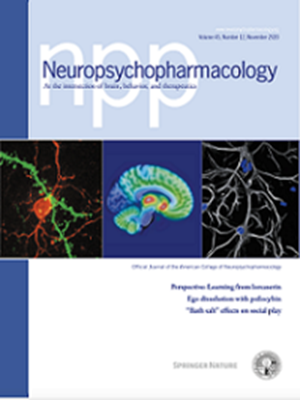Improved patient identification by incorporating symptom severity in deep learning using neuroanatomic images in first episode schizophrenia
IF 6.6
1区 医学
Q1 NEUROSCIENCES
引用次数: 0
Abstract
Brain alterations associated with illness severity in schizophrenia remain poorly understood. Establishing linkages between imaging biomarkers and symptom expression may enhance mechanistic understanding of acute psychotic illness. Constructing models using MRI and clinical features together to maximize model validity may be particularly useful for these purposes. A multi-task deep learning model for standard case/control recognition incorporated with psychosis symptom severity regression was constructed with anatomic MRI collected from 286 patients with drug-naïve first-episode schizophrenia and 330 healthy controls from two datasets, and validated with an independent dataset including 40 first-episode schizophrenia. To evaluate the contribution of regression to the case/control recognition, a single-task classification model was constructed. Performance of unprocessed anatomical images and of predefined imaging features obtained using voxel-based morphometry (VBM) and surface-based morphometry (SBM), were examined and compared. Brain regions contributing to the symptom severity regression and illness identification were identified. Models developed with unprocessed images achieved greater group separation than either VBM or SBM measurements, differentiating schizophrenia patients from healthy controls with a balanced accuracy of 83.0% with sensitivity = 76.1% and specificity = 89.0%. The multi-task model also showed superior performance to single-task classification model without considering clinical symptoms. These findings showed high replication in the site-split validation and external validation analyses. Measurements in parietal, occipital and medial frontal cortex and bilateral cerebellum had the greatest contribution to the multi-task model. Incorporating illness severity regression in pattern recognition algorithms, our study developed an MRI-based model that was of high diagnostic value in acutely ill schizophrenia patients, highlighting clinical relevance of the model.

将症状严重程度纳入深度学习,利用神经解剖图像改进对首发精神分裂症患者的识别。
人们对与精神分裂症病情严重程度相关的脑部改变仍然知之甚少。建立成像生物标志物与症状表现之间的联系可能会加深对急性精神病的机理认识。利用核磁共振成像和临床特征共同构建模型,以最大限度地提高模型的有效性,可能对这些目的特别有用。我们利用从两个数据集中收集的286名药物治疗无效的首发精神分裂症患者和330名健康对照者的解剖核磁共振成像构建了标准病例/对照识别与精神病症状严重程度回归相结合的多任务深度学习模型,并利用包括40名首发精神分裂症患者的独立数据集进行了验证。为了评估回归对病例/对照识别的贡献,我们构建了一个单一任务分类模型。研究人员对未经处理的解剖图像以及使用基于体素的形态测量(VBM)和基于表面的形态测量(SBM)获得的预定义成像特征的性能进行了检查和比较。确定了有助于症状严重程度回归和疾病识别的脑区。与 VBM 或 SBM 测量相比,使用未处理图像开发的模型实现了更大的组别分离,将精神分裂症患者与健康对照组区分开来的均衡准确率为 83.0%,灵敏度 = 76.1%,特异性 = 89.0%。在不考虑临床症状的情况下,多任务模型的表现也优于单任务分类模型。这些结果在分点验证和外部验证分析中显示出很高的重复性。顶叶、枕叶和内侧额叶皮层以及双侧小脑的测量结果对多任务模型的贡献最大。我们的研究将疾病严重程度回归纳入模式识别算法,建立了一个基于核磁共振成像的模型,该模型对急性精神分裂症患者具有很高的诊断价值,凸显了该模型的临床意义。
本文章由计算机程序翻译,如有差异,请以英文原文为准。
求助全文
约1分钟内获得全文
求助全文
来源期刊

Neuropsychopharmacology
医学-精神病学
CiteScore
15.00
自引率
2.60%
发文量
240
审稿时长
2 months
期刊介绍:
Neuropsychopharmacology is a reputable international scientific journal that serves as the official publication of the American College of Neuropsychopharmacology (ACNP). The journal's primary focus is on research that enhances our knowledge of the brain and behavior, with a particular emphasis on the molecular, cellular, physiological, and psychological aspects of substances that affect the central nervous system (CNS). It also aims to identify new molecular targets for the development of future drugs.
The journal prioritizes original research reports, but it also welcomes mini-reviews and perspectives, which are often solicited by the editorial office. These types of articles provide valuable insights and syntheses of current research trends and future directions in the field of neuroscience and pharmacology.
 求助内容:
求助内容: 应助结果提醒方式:
应助结果提醒方式:


